1. Why is my carpet wet in my bedroom
Discovering a wet carpet in your bedroom can be frustrating and raise several questions. The primary concern often revolves around identifying the source of the moisture. Wet carpets in bedrooms can occur due to various reasons, ranging from hidden plumbing leaks to condensation caused by high humidity. A moist carpet not only creates discomfort but can also lead to unpleasant odors and potential mold growth. Understanding the root cause is essential for addressing the issue promptly and effectively.
1.1. Moisture in carpet
The moisture in your carpet can come from several sources. It could be as simple as an accidental spill or something more complex like seepage from nearby plumbing. Moisture that lingers in your carpet can weaken the fibers and cause long-term damage if not treated immediately.
1.2. Damp carpet causes
Dampness in your carpet is often the result of poor ventilation, which traps moisture in the room. Environmental factors, such as humid climates or rainy seasons, also contribute to increased indoor dampness. It is essential to monitor and address these causes to keep your carpet in good condition.
1.3. Hidden plumbing leaks
One of the most common reasons for a wet carpet is a hidden plumbing leak. Pipes running through walls or under floors can develop leaks over time, leading to water seeping into your bedroom’s carpet. If not addressed, this can escalate into more significant structural problems.
1.4. Signs of plumbing issues
Spotting signs of plumbing issues early is critical. Look out for musty smells, unexplained water stains on walls or ceilings, or a consistent wet spot on the carpet. Sudden spikes in your water bill can also indicate a hidden leak. Immediate action, such as consulting a professional plumber, can save your carpet and prevent further damage.
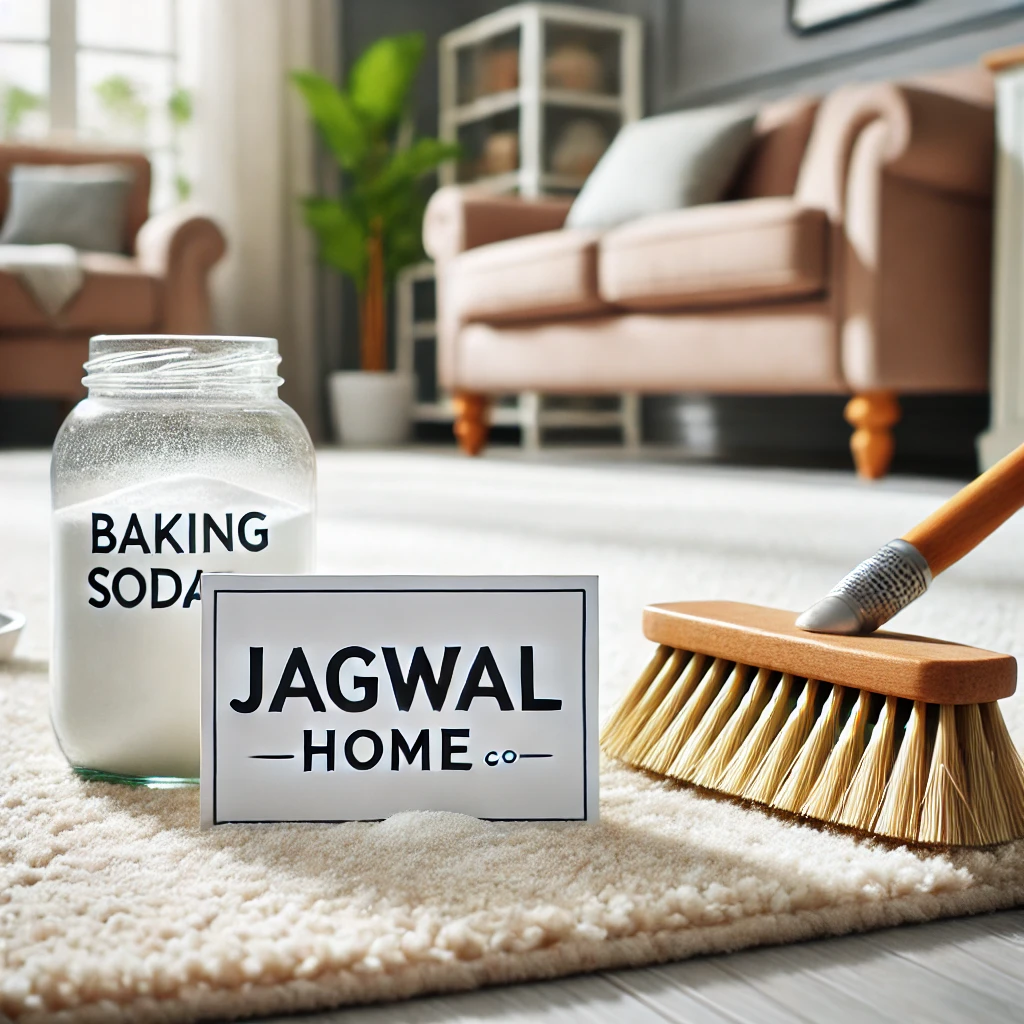
2. Wet carpet in bedroom
A wet carpet in your bedroom isn’t just an inconvenience; it’s a potential health and maintenance issue. Identifying the cause and resolving it quickly is crucial to maintaining a clean, dry, and comfortable living environment. Here are some practical insights to handle this common problem effectively.
2.1. Prevent wet carpets
Prevention is always better than a cure. Regularly inspect your bedroom for signs of moisture, including checking around windows, air conditioning units, and houseplants. Keeping your home well-ventilated and maintaining moderate indoor humidity levels can go a long way in preventing wet carpets.
2.2. Dry wet carpet solutions
If you discover a wet carpet, act fast. Use absorbent towels or a wet vacuum to remove as much water as possible. Set up fans or a dehumidifier to speed up the drying process. For severe cases, consider hiring a professional carpet cleaner who can handle deep moisture extraction and prevent mold growth.
2.3. Bedroom carpet maintenance
Maintaining your carpet involves regular cleaning, using waterproof underlays, and avoiding excessive water exposure. Routine vacuuming and professional deep cleaning not only keep your carpet looking fresh but also help in identifying potential problems early on.
2.4. Carpet waterproofing tips
Invest in waterproofing solutions to protect your carpet from unforeseen spills or leaks. Adding a moisture barrier under the carpet or using stain-resistant sprays can help. Ensuring that windows and doors are properly sealed also reduces the risk of external moisture entering your bedroom.

3. How do I stop my carpet from being damp
A damp carpet can be a persistent problem if not addressed properly. Preventing dampness requires both proactive measures and quick action when the issue arises. With a few adjustments, you can keep your carpet dry, maintain its quality, and ensure a comfortable living environment.
3.1. Proper ventilation solutions
Good ventilation is essential to stop carpets from becoming damp. Ensure your room has adequate airflow by opening windows, using exhaust fans, or installing an air purifier. Proper ventilation helps control humidity levels, which can otherwise lead to carpet dampness.
3.2. Keep carpets dry tips
Simple practices can go a long way in keeping your carpet dry. Avoid placing potted plants directly on the carpet, as they can cause moisture seepage. Use coasters under furniture to prevent water accumulation, and clean spills immediately to avoid saturation.
3.3. Control humidity in bedroom
High humidity is a leading cause of damp carpets. Use a dehumidifier in your bedroom to regulate indoor moisture levels. Additionally, keep your air conditioning system well-maintained, as it also plays a significant role in controlling humidity.
3.4. Preventive carpet care
Prevention starts with choosing the right carpet for your bedroom. Opt for carpets made of moisture-resistant materials, especially if you live in a humid area. Regularly clean your carpets with products designed to repel water and prevent moisture buildup.

4. Why is my carpet randomly wet
Random wet spots on your carpet can be both puzzling and frustrating. Understanding the possible causes can help you tackle the problem quickly and efficiently. From plumbing issues to environmental factors, a variety of reasons could be responsible for this mysterious phenomenon.
4.1. Random wet carpet causes
Unexplained wet spots can result from accidental spills, pet-related incidents, or even small leaks you might have overlooked. Additionally, weather conditions like rain or snow brought indoors can also create these random damp areas.
4.2. Pet-related wet spots
If you have pets, they might be the cause of random wet patches on your carpet. Pets can spill water bowls or have accidents that go unnoticed. Regular checks and training your pets to avoid certain areas can minimize this issue.
4.3. Weather and water seepage
External weather conditions often contribute to wet carpets. Rainwater can seep in through poorly sealed windows or doors. Snow carried in on shoes or clothing can also melt and create wet spots, which are easy to overlook at first.
4.4. Plumbing and HVAC problems
Hidden plumbing or HVAC issues can sometimes cause random wet spots. For instance, condensation from an air conditioning unit or a minor pipe leak could lead to localized dampness. If the issue persists, consult a professional to inspect your home’s systems thoroughly.
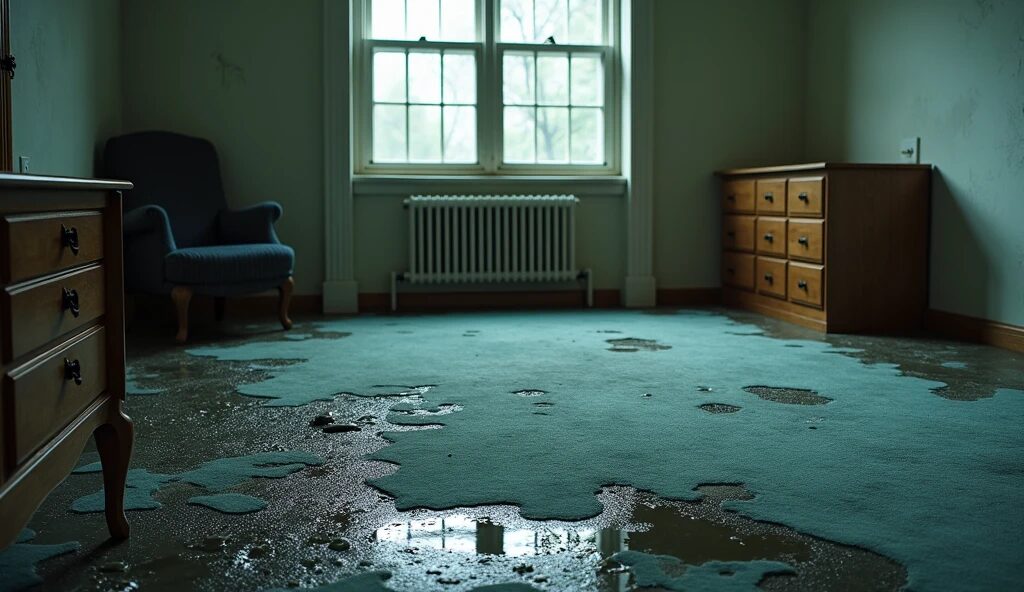
5. How to fix a wet carpet after a leak
A leaking pipe or appliance can leave your carpet soaked, causing damage and creating the perfect environment for mold and mildew growth. Acting quickly and following the right steps can restore your carpet and prevent long-term issues.
5.1. Immediate steps for a wet carpet
Start by locating and stopping the source of the leak. Turn off the water supply if necessary. Once the leak is fixed, remove as much water as possible using towels, a wet vacuum, or a mop. Quick action will prevent deeper saturation of the carpet and padding underneath.
5.2. Drying carpet after a leak
Effective drying is essential to fix a wet carpet. Use fans to improve airflow, and set up a dehumidifier to remove moisture from the air. If weather permits, open windows to speed up the drying process. For large leaks, consider professional carpet cleaning services.
5.3. Prevent mold after carpet leak
Mold and mildew can develop within 24–48 hours of a leak. Clean the carpet with an anti-microbial solution to kill mold spores and bacteria. Baking soda can also help absorb moisture and odors. Ensure the carpet is completely dry before placing furniture back.
5.4. Replace vs. restore carpet
Severe leaks may require replacing parts of the carpet or padding. Assess the damage to determine if restoration is possible. For minor leaks, professional cleaning may suffice, but for significant damage, consider replacement to avoid future issues.
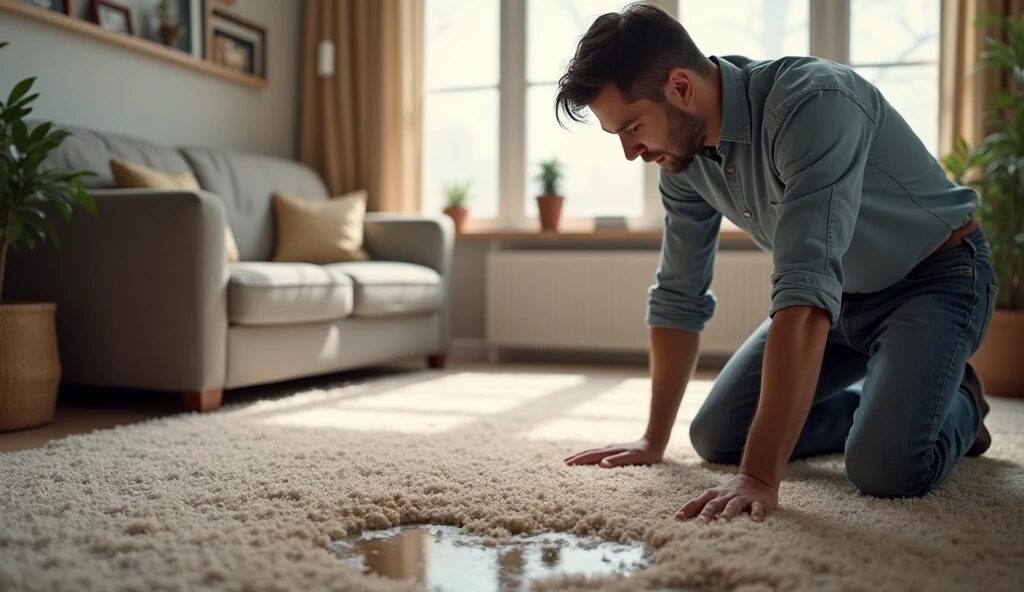
6. How to dry a carpet faster after a water spill
A water spill on your carpet can quickly lead to dampness if not addressed. Drying your carpet quickly is key to preserving its quality and avoiding unpleasant odors or mold. By following the right techniques, you can ensure fast and effective drying.
6.1. Use fans to dry carpets quickly
Fans are your first line of defense after a water spill. Place a portable fan or turn on your ceiling fan to create airflow over the wet carpet. This helps evaporate moisture faster and reduces drying time significantly.
6.2. Remove excess water
Before focusing on drying, remove as much water as possible using absorbent towels or a wet vacuum. Press firmly with towels to soak up the spill, ensuring you minimize the amount of water the carpet absorbs.
6.3. Dehumidifier for carpet drying
A dehumidifier can help speed up the drying process by reducing the humidity in the air. This is particularly effective in closed spaces or during humid weather, as it prevents additional moisture from settling in the carpet.
6.4. Baking soda to absorb moisture
Sprinkling baking soda over the damp area is a simple yet effective trick. Baking soda absorbs moisture while neutralizing odors. Leave it on for several hours, then vacuum it up for a clean, dry carpet.

7. How to clean carpet after pet accidents
Pet accidents on carpets are inevitable, but cleaning them properly can eliminate stains and odors, keeping your home fresh and hygienic. Here’s how to clean your carpet effectively after such incidents.
7.1. Remove solids or excess liquid
Act quickly to remove solids using gloves or a paper towel. For liquids, blot the area with a clean, absorbent cloth or paper towels. Avoid rubbing, as it can spread the stain further into the carpet fibers.
7.2. Use a pet-safe cleaner
Choose an enzymatic cleaner specifically designed for pet accidents. Enzyme-based cleaners break down organic material in urine, feces, or vomit, eliminating both stains and odors. Spray the cleaner generously, following the product instructions for best results.
7.3. Homemade cleaning solution
For a DIY option, mix white vinegar and water in equal parts. Spray the solution onto the stain, let it sit for 5–10 minutes, and blot it with a clean cloth. Vinegar neutralizes odors and cleans the carpet without harsh chemicals.
7.4. Deodorize the area
Sprinkle baking soda on the cleaned spot once it’s dry to deodorize the carpet. Let it sit overnight, then vacuum it thoroughly. Baking soda effectively absorbs lingering smells, leaving your carpet fresh and clean.
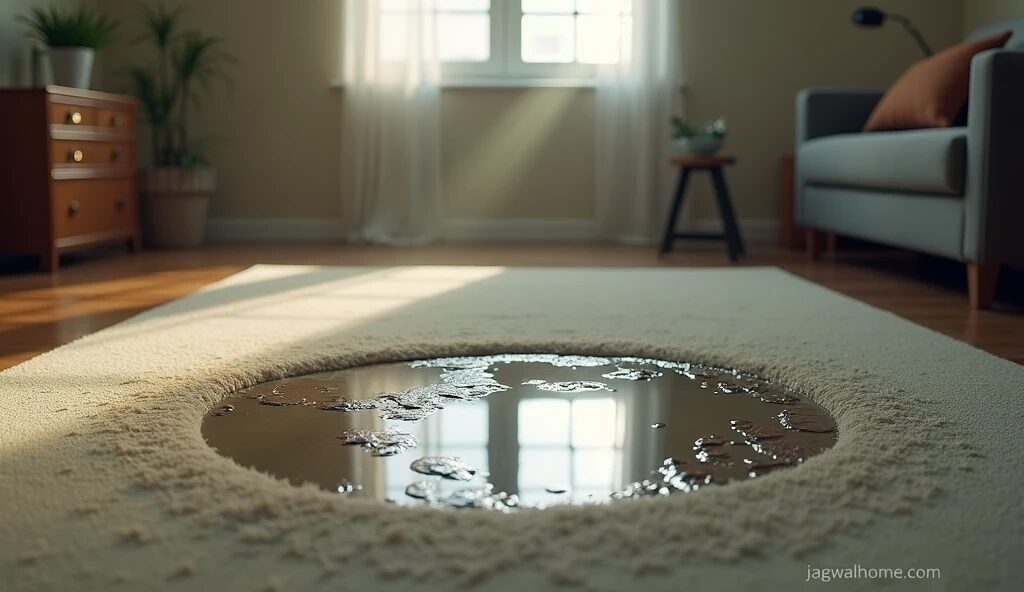
8. How to deep clean a carpet with household items
Deep cleaning a carpet doesn’t always require expensive equipment or professional services. With common household items, you can achieve a thorough clean and restore your carpet’s look and feel.
8.1. Baking soda and vacuum method
Baking soda is an excellent natural cleaner. Sprinkle a generous amount over the carpet, focusing on heavily soiled areas. Let it sit for 15–20 minutes to absorb dirt and odors, then vacuum the carpet thoroughly.
8.2. White vinegar and water solution
Mix equal parts white vinegar and warm water in a spray bottle. Lightly mist the carpet, avoiding over-saturation. Use a soft-bristled brush to scrub the area gently, then blot with a clean cloth to lift stains and dirt.
8.3. Steam cleaning without a machine
You can mimic steam cleaning using a hot, damp cloth and an iron. Place the damp cloth over the stained area and press it with a hot iron for a few seconds. This method loosens dirt, making it easier to remove.
8.4. Dish soap for spot cleaning
For stubborn stains, mix a few drops of dish soap with warm water. Dip a cloth or sponge into the solution and gently scrub the stain. Rinse the area with clean water and blot dry with a towel.
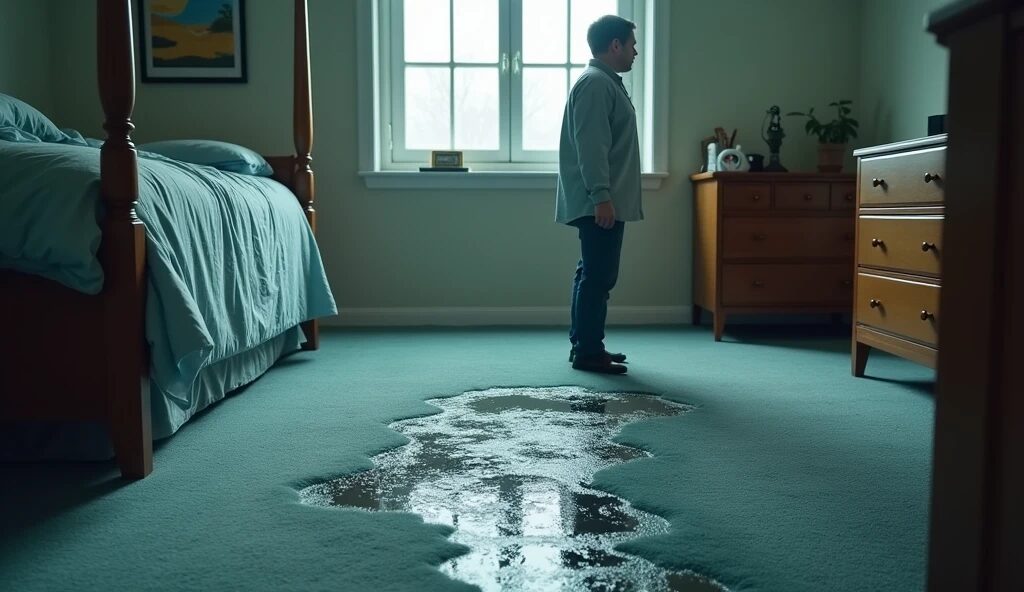
9. How to clean carpet without a vacuum
Cleaning your carpet without a vacuum may seem challenging, but it’s entirely possible with the right tools and techniques. Whether your vacuum is out of order or you simply want alternative methods, here’s how to keep your carpet spotless.
9.1. Use a carpet brush
A carpet brush is an effective tool for loosening dirt and debris embedded in the fibers. Work the brush in short, firm strokes across the carpet. This method is ideal for surface cleaning and can freshen up your carpet between deep cleans.
9.2. Shake out smaller rugs
If the carpet is small or movable, take it outside and shake it vigorously to remove dust and debris. You can also beat it with a broom handle to dislodge dirt more effectively.
9.3. Sweep the carpet
A stiff-bristled broom is a handy alternative to a vacuum. Sweep the carpet in one direction to gather debris into piles, then collect it with a dustpan. This method works well for larger carpets.
9.4. Spot clean stains
Use a damp cloth or sponge with a mild detergent solution to tackle stains. Gently blot the stained area and rinse with a clean, damp cloth to remove residue. Let it air dry completely.

10. How to clean a carpet with baking soda
Baking soda is a natural and versatile cleaning agent that can help deodorize and refresh your carpet. It’s easy to use and highly effective for regular maintenance or spot cleaning.
10.1. Deodorizing with baking soda
Sprinkle a generous layer of baking soda over the entire carpet. Let it sit for at least 30 minutes, or leave it overnight for stronger odors. Then, sweep or vacuum the carpet to remove the baking soda along with absorbed odors.
10.2. Stain removal with baking soda
For fresh stains, sprinkle baking soda directly on the affected area. Pour a small amount of warm water over it and let it bubble for a few minutes. Gently blot the stain with a cloth or sponge and wipe away any residue.
10.3. Baking soda and vinegar combination
For tough stains, mix baking soda with white vinegar to create a paste. Apply the paste to the stain and let it sit for 10–15 minutes. Scrub gently with a brush, then rinse with a damp cloth and allow the carpet to dry.
10.4. Refreshing high-traffic areas
Focus on high-traffic areas by sprinkling baking soda and brushing it into the carpet fibers. Let it sit for 20–30 minutes before removing it. This method revives worn-out carpet sections and keeps them looking new.

Conclusion: How to Clean Carpet Without a Vacuum and With Baking Soda
Maintaining a clean carpet doesn’t always require a vacuum. With simple methods like using a carpet brush, sweeping, or spot cleaning with a damp cloth, you can keep your carpet looking fresh without relying on electrical appliances. These alternatives are not only effective but can also extend the lifespan of your carpet by preventing dirt from settling deep into the fibers.
When it comes to cleaning, baking soda is your secret weapon. Whether it’s freshening up your carpet or tackling stains, baking soda is an inexpensive and natural solution. By sprinkling it over the carpet, allowing it to sit, and then vacuuming or brushing it out, you can neutralize odors and refresh high-traffic areas. Combining baking soda with vinegar enhances its stain-removal power, making it a go-to remedy for stubborn spots.
Incorporating these cleaning techniques into your routine will ensure that your carpet stays in top condition without much hassle. By taking proactive steps to clean and care for your carpet, you’ll enjoy a fresher, healthier living space every day. Keep in mind these methods are easy, effective, and require little to no special equipment. Happy cleaning!
FAQs: How to Clean Carpet Without a Vacuum and With Baking Soda
1. Can I use baking soda to clean my carpet daily?
Yes, you can! Baking soda is an easy, natural way to freshen up your carpet every day. Simply sprinkle a small amount over the surface, let it sit for a bit, and then vacuum it up. It’s an affordable and safe option to keep your carpet smelling nice without any harsh chemicals.
2. Is it safe to use a broom on my carpet?
Absolutely! Using a broom on your carpet can be a good alternative if you don’t have a vacuum. Just make sure you’re using a broom with stiff bristles to help lift the dirt. It’s a gentle method and works well for light cleaning.
3. How can I prevent baking soda from leaving residue on my carpet?
To avoid residue, make sure you vacuum the baking soda thoroughly after letting it sit for the recommended time. A vacuum with strong suction and a clean filter will help pick up all the powder, leaving your carpet fresh and clean.
4. What should I do if my carpet still smells after using baking soda?
If the smell lingers, it may mean the odor is deeper in the carpet. Try repeating the baking soda treatment or mix in some vinegar for a stronger deodorizing effect. If the smell persists, it might be time to consider a professional cleaning to get to the root of the problem.
5. How do I know if my carpet has a hidden stain I can’t see?
If your carpet smells off or looks discolored, there might be a hidden stain. High-traffic areas are especially prone to this. A deeper clean using baking soda and vinegar can help lift those stains, and you’ll often see results after letting it sit for a little while.
6. Can I use this cleaning method on all types of carpet?
Baking soda and brushing are gentle enough for most carpet types. However, if you have a delicate carpet like wool or silk, it’s best to test a small area first to make sure it won’t cause any damage. Always check the care instructions from the manufacturer too!
7. How long should I let baking soda sit on my carpet?
For best results, let the baking soda sit for about 30 minutes to an hour to deodorize your carpet. For stains, it’s a good idea to let it sit for 15-20 minutes before blotting or scrubbing. Just remember not to leave it too long if you have a sensitive carpet.
8. Is it necessary to wash my carpet after using a broom or brush?
Usually, a broom or brush cleaning doesn’t need to be followed by washing. If your carpet still looks clean after sweeping, you’re good to go. However, if there’s visible dirt or staining, you may want to follow up with a deeper clean.
9. Can I use other natural ingredients with baking soda to clean my carpet?
Yes! Vinegar works wonderfully alongside baking soda to tackle tough stains. You can even add a few drops of essential oils like lavender or tea tree oil to the baking soda for a fresh, pleasant scent while you clean.
10. Can I use these methods for carpet in other rooms, such as my kitchen or bathroom?
Definitely! These cleaning methods are great for any carpet in your home, even in the kitchen or bathroom. Just be careful in moisture-prone areas, and ensure your carpet is dried completely afterward to avoid any mold growth.

